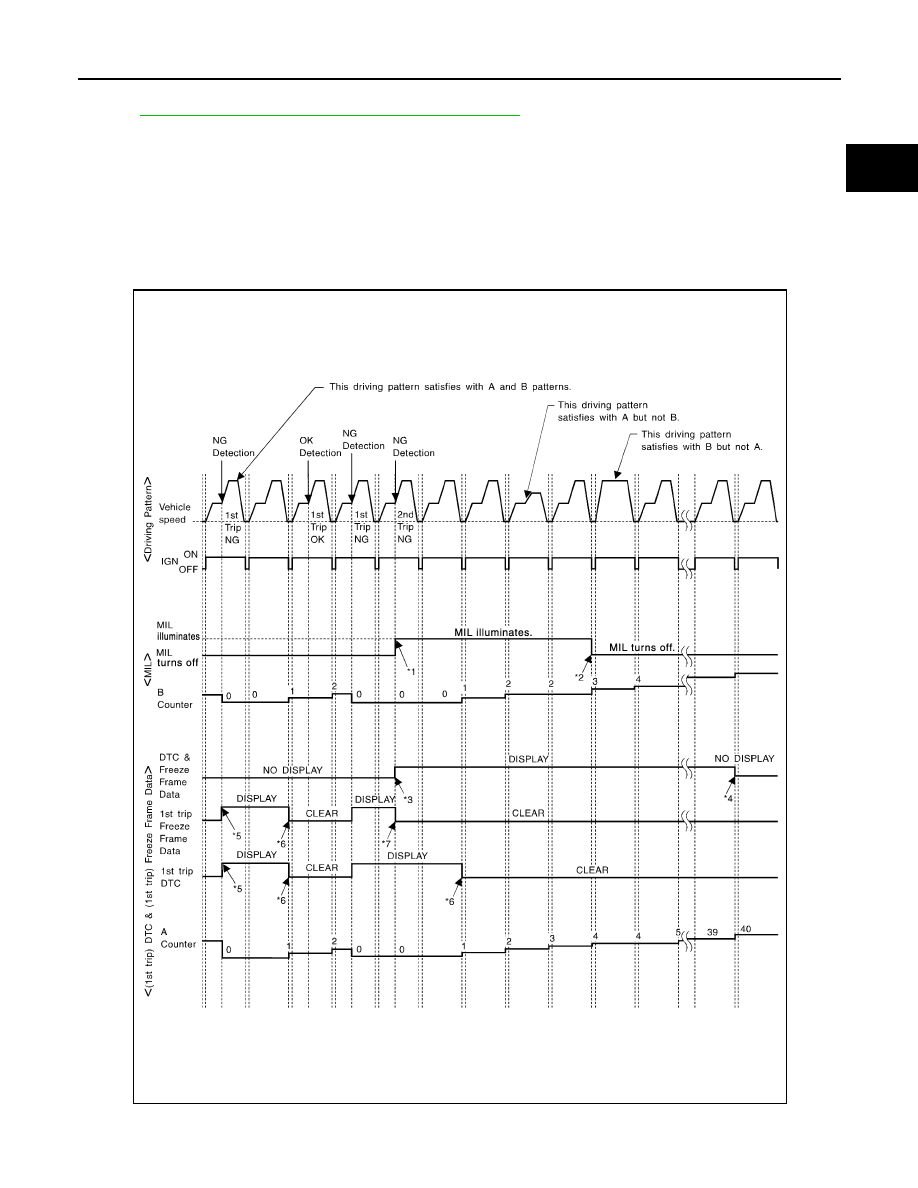Nissan Frontier. Manual - part 370

DIAGNOSIS SYSTEM (ECM)
EC-51
< SYSTEM DESCRIPTION >
[QR25DE]
C
D
E
F
G
H
I
J
K
L
M
A
EC
N
P
O
Driving Pattern C
EC-52, "DIAGNOSIS DESCRIPTION : Driving Pattern"
.
Example:
If the stored freeze frame data is as per the following:
Engine speed: 850 rpm, Calculated load value: 30%, Engine coolant temperature: 80
°C (176°F)
To be satisfied with driving pattern C, the vehicle should run under the following conditions:
Engine speed: 475 – 1,225 rpm, Calculated load value: 27 – 33%, Engine coolant temperature: more than
70
°C (158°F)
Relationship Between MIL, DTC, 1st Trip DTC and Driving Patterns Except For “Misfire <Exhaust
Quality Deterioration>”, “Fuel Injection System”
JMBIA1418GB